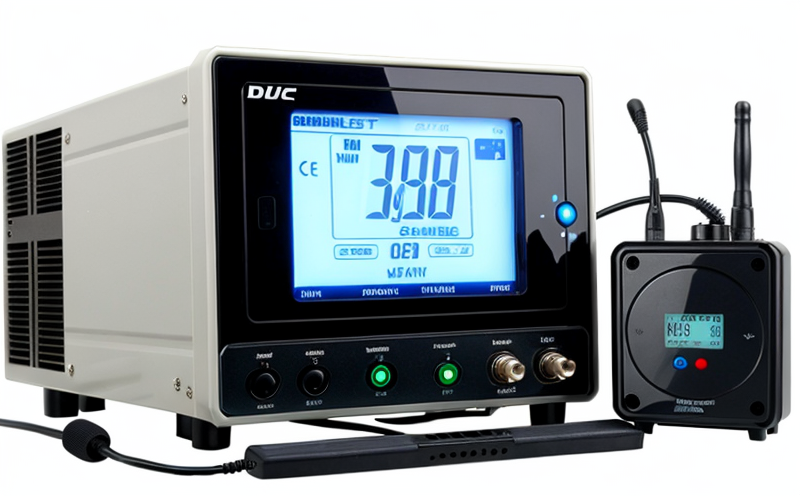JIS C 62209 SAR Testing for Japanese Mobile Equipment
In today’s fast-paced technological environment, ensuring that mobile devices comply with stringent safety and regulatory standards is paramount. The Japan Industrial Standard (JIS) C 62209-1 specifies the procedures for determining the Specific Absorption Rate (SAR) in human subjects when exposed to radio frequency (RF) electromagnetic fields emitted by wireless communication devices. This testing procedure is particularly critical for Japanese manufacturers and developers aiming to ensure their products meet regulatory requirements before entering the market.
The SAR measurement quantifies the rate at which RF energy is absorbed by tissues of the body, expressed in watts per kilogram (W/kg). It is a key parameter used to evaluate the safety of wireless devices. The JIS C 62209-1 standard provides detailed methodologies for conducting these tests, ensuring that manufacturers can accurately determine compliance with relevant regulations.
The testing process involves several critical steps. Firstly, the device under test must be subjected to controlled RF exposure using an approved chamber or phantom model designed to simulate human body tissue. The equipment used in this testing includes specialized SAR measurement systems and software capable of processing and analyzing the data collected during exposure. Compliance with JIS C 62209-1 requires that these measurements are conducted under specific conditions, including frequency bands relevant to Japanese mobile devices.
Understanding the importance of accurate compliance is essential for manufacturers aiming to avoid potential delays or rejections in the regulatory approval process. By adhering strictly to the procedures outlined in JIS C 62209-1, companies can ensure that their products are safe and reliable, enhancing consumer trust and confidence.
The implications of non-compliance with these standards can be severe, including product recalls, reputational damage, and financial losses. Therefore, it is crucial for manufacturers to invest in robust testing infrastructure and expertise to ensure full compliance. Partnering with a reputable laboratory that specializes in SAR testing can provide the necessary support and resources to navigate these regulatory requirements effectively.
The test results are typically reported as the maximum SAR value obtained during the exposure period. These values must be compared against the limit specified by JIS C 62209-1, which is designed to ensure that the device does not exceed safe levels of RF energy absorption in human tissues. Compliance with this standard is a key step in ensuring product safety and regulatory approval.
In summary, JIS C 62209 SAR testing for Japanese mobile equipment is an essential process that ensures compliance with critical safety standards. By adhering to the procedures outlined in this standard, manufacturers can protect their products from potential risks while building trust with consumers and regulators.
Customer Impact and Satisfaction
- Avoiding Regulatory Delays: Compliance with JIS C 62209 ensures that there are no delays in the approval process, allowing for timely market entry of products.
- Enhanced Consumer Trust: By ensuring safety standards are met, manufacturers can build a strong reputation and trust among their customer base.
The impact on customers is significant as it ensures that devices meet strict safety criteria. Compliance with JIS C 62209 not only enhances the trust of consumers but also reduces the risk of product recalls or other regulatory issues, which can be costly and damaging to a company’s reputation.
Customer satisfaction is directly linked to the reliability and safety of products. By adhering to these standards, manufacturers demonstrate their commitment to quality and safety, leading to increased customer loyalty and positive reviews. This, in turn, translates into higher sales and market share for compliant companies.
International Acceptance and Recognition
- Affirmation of Quality: Compliance with JIS C 62209 is recognized globally as an assurance of quality, which can enhance a company's international reputation.
- Market Access: Meeting these standards opens up opportunities for market access in Japan and other regions that recognize the importance of SAR testing.
The acceptance of JIS C 62209 is not limited to Japan; it is also recognized internationally, particularly by countries with similar regulatory frameworks. This recognition allows manufacturers to comply with a single standard across multiple markets, streamlining their compliance efforts and reducing costs associated with different regulatory requirements.
Compliance with this standard can also provide an advantage in bidding for government contracts or entering new international markets where stringent safety regulations are in place. The acceptance of JIS C 62209 demonstrates a company's commitment to quality and safety, which is highly valued by both consumers and regulatory bodies.
Moreover, the recognition of this standard can help companies establish themselves as leaders in their industry, fostering long-term relationships with suppliers, customers, and partners. This recognition also enhances a company’s ability to attract investment and talent, further solidifying its position in the market.
Use Cases and Application Examples
The JIS C 62209 SAR testing process is particularly relevant for manufacturers of mobile phones, wireless headsets, and other RF-emitting devices. Here are some specific use cases:
- Mobile Phones: Ensuring that the phone emits safe levels of RF energy when in use or standby mode.
- Wireless Headsets: Verifying that the headset complies with safety standards, especially during prolonged use near the head.
- Medical Devices: Testing devices used in close proximity to the body for potential overheating risks due to RF exposure.
In practical applications, this testing ensures that the devices do not exceed safe SAR limits set by regulatory bodies. For example, a mobile phone manufacturer would use JIS C 62209 to ensure that its latest model meets the safety requirements before it can be marketed in Japan. Similarly, a medical device company might use this standard to validate the safety of their product during clinical trials.
The application of JIS C 62209 is not limited to specific devices but extends to any RF-emitting equipment that may come into contact with human tissues. This ensures that all relevant stakeholders are protected from potential risks associated with exposure to RF energy.





